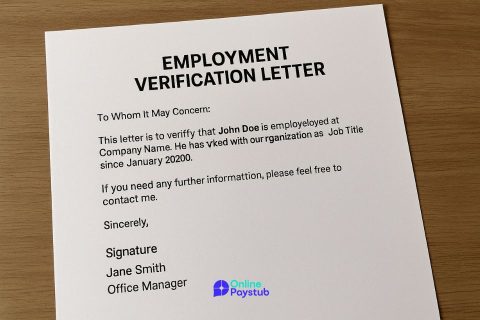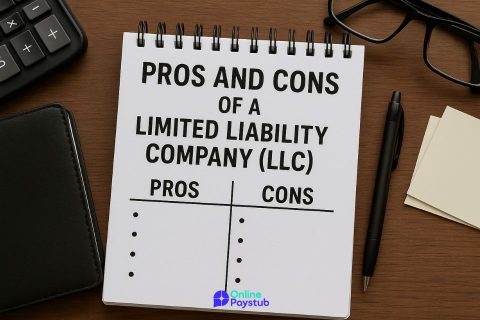Shift differential pay refers to additional compensation offered to employees who work outside of traditional business hours. While the concept seems straightforward extra pay for late night or weekend shifts the specifics of what it covers can vary widely based on industry, employment type, and geographic location.
In today’s labor market, this type of compensation serves a dual purpose: it incentivizes workers to fill less desirable shifts and helps employers maintain operational coverage across all hours. The practice is especially prevalent in sectors that operate 24/7, such as healthcare, manufacturing, transportation, hospitality, and public safety.
This pay differential typically applies to:
- Evening or night shifts: Often starting after 4 p.m. and continuing into early morning hours.
- Weekend work: Shifts scheduled on Saturdays and Sundays, especially during night hours.
- Holiday shifts: Time worked on federal or state-recognized holidays.
- On-call or rotating schedules: Roles requiring irregular availability or frequent shift changes.
Though not mandated by the Fair Labor Standards Act (FLSA), shift differential pay is frequently governed by collective bargaining agreements, internal HR policies, or industry-specific standards. In unionized environments, such as those under SEIU or AFSCME contracts, the eligibility and rates are clearly outlined and enforced.
Employers generally structure this compensation in one of two ways:
- A flat hourly bonus (e.g., an extra $1.00/hour),
- A percentage-based premium (e.g., 10% of base pay).
Ultimately, shift differential pay serves as a financial recognition of the inconvenience and disruption associated with working atypical hours. In a competitive labor market, it’s a strategic lever for both retention and recruitment.
Which Employees Qualify for Shift Differential and Under What Conditions?
Not every employee is entitled to shift differential pay. Eligibility often depends on a mix of company policy, union agreements, job classification, and the nature of the shifts worked.
Hourly vs. Salaried Employees
Hourly employees are the most common recipients of shift differential pay. In fact, many employers explicitly offer this pay type as part of hourly wage structures to fill second, third, or overnight shifts. These roles typically include:
- Nurses and medical technicians
- Factory and warehouse workers
- Call center agents
- Security personnel
- Public transit operators
Salaried employees, on the other hand, may be less frequently eligible. Since salaried roles often include flexibility expectations, many organizations do not offer differential pay unless the shift patterns are sustained or clearly defined in the employment contract. However, in unionized environments or high-demand sectors like critical care or IT infrastructure, salaried employees may also receive it especially for night and on-call rotations.
Union Contracts and Labor Agreements
Collective bargaining agreements often contain explicit provisions for shift differential eligibility. For example, contracts negotiated by SEIU or AFSCME frequently detail:
- Specific time windows that trigger differential pay
- Percentages or fixed amounts for night, weekend, or holiday shifts
- Rules about rotation, minimum shift duration, and accrual methods
Failing to apply these standards can lead to compliance issues or labor disputes.
Business Type and Shift Patterns
Companies operating in regulated or essential service industries are more likely to formalize shift differential rules. For instance:
- Hospitals may apply higher rates for ICU night nurses.
- Logistics firms might offer premiums for overnight warehouse staff.
- Public transit authorities may include differential pay in contracts to attract drivers for early or late routes.
To determine eligibility, employers generally define:
- Which shifts qualify (e.g., hours worked between 10 p.m. and 6 a.m.)
- Whether full or partial shifts count
- Conditions for consistent vs. rotating shifts
In summary, qualifying for shift differential pay isn’t universal. It’s shaped by employment classification, internal policy, and external regulations especially where labor unions or multi-jurisdictional operations are involved.
How is Shift Differential Pay Calculated Across Industries?
Although the principles behind shift differential pay are consistent, the calculation methods vary notably across industries. Employers typically adopt either a fixed amount per hour or a percentage-based premium applied to the employee’s base pay. The chosen method often reflects sector standards, workforce structure, and payroll system capabilities.
Fixed Dollar Amounts
Industries with high volumes of hourly labor such as manufacturing, retail, and hospitality often prefer a flat-rate model. For example:
- A retail chain may offer an additional $0.75/hour for evening shifts.
- A hotel might add $1.25/hour for overnight front desk roles.
- A factory may apply a $0.50/hour differential for rotating shifts.
This approach simplifies payroll and aligns with standardized pay grades.
Percentage-Based Premiums
Sectors with professional or licensed roles such as healthcare, utilities, and public safety frequently use percentage-based models. These premiums typically range from 5% to 15% of base pay and are well-suited for salaried or highly skilled hourly staff. Examples include:
- A hospital pays ICU nurses an additional 10% for night shifts.
- A city transit authority offers 7% on top of regular pay for weekend bus routes.
- A data center adds 12% for rotating on-call IT engineers.
This model adjusts to variations in base wages and preserves proportional equity among employees in different pay brackets.
Shift Timing and Differential Tiers
Many employers create tiered shift differential structures based on time windows. For instance:
- Evening (4 p.m.–12 a.m.): 5% increase
- Night (12 a.m.–8 a.m.): 10% increase
- Weekend/Holiday: flat $1.00–$2.00 per hour or 15% premium
Tiers help align cost with shift difficulty and improve scheduling efficiency.
Industry-Specific Benchmarks
Benchmarks vary by sector. According to HR surveys:
| Industry | Common Differential |
|---|---|
| Healthcare | 8%–15% (night, weekend) |
| Manufacturing | $0.50–$1.25 per hour |
| Logistics & Warehousing | 5%–10% or flat hourly bonus |
| Hospitality | Flat rate, varies by shift |
| Public Safety | Often negotiated in contracts |
These benchmarks serve as reference points when companies determine their own pay structures, especially in competitive labor markets.
In sum, shift differential pay is not one-size-fits-all. It’s highly context-driven determined by workforce dynamics, legal exposure, union obligations, and budget strategy.
How Does Shift Differential Interact With Overtime and Holiday Pay?
Shift differential pay doesn’t operate in isolation. It frequently overlaps with overtime compensation and holiday pay, which adds complexity to payroll calculations. Understanding how these components interact is essential for both employers and employees to ensure compliance with labor standards and accurate compensation.
Interaction with Overtime
When an employee works more than 40 hours in a week and some of those hours fall under a shift differential schedule, the regular rate of pay must reflect both base wages and any applicable differentials. This regular rate becomes the foundation for calculating overtime.
Example Calculation:
- Base wage: $18.00/hour
- Night shift differential: 10% → $1.80/hour
- Total night pay: $19.80/hour
- Overtime rate: 1.5 × $19.80 = $29.70/hour
If the employee worked 10 hours at night over the 40-hour threshold, those hours would be compensated at the $29.70 rate.
Failure to integrate differential pay into the overtime base rate can result in underpayment, legal liability, and payroll audits especially under scrutiny from the U.S. Department of Labor.
Impact on Holiday Pay
Holiday pay policies vary by employer, but shift differentials often apply in addition to holiday premiums. For example:
- An employee working on a recognized holiday during an overnight shift may receive:
- Base pay + holiday premium + shift differential
Assuming:
- Base wage = $20/hour
- Holiday premium = 1.5×
- Night differential = $2/hour
The employee’s effective rate becomes:
($20 × 1.5) + $2 = $32/hour
Some companies structure holiday shift pay as double-time or apply fixed bonuses, but differential eligibility usually remains intact unless explicitly excluded by policy or contract.
Federal vs. State-Level Rules on Shift Differential
There is no federal law that mandates shift differential pay. The Fair Labor Standards Act (FLSA), the primary federal statute governing wages and hours, does not require employers to compensate workers differently based on the time of day or day of the week the work is performed. However, the FLSA does require that shift differentials when provided be included in the calculation of overtime pay.
Federal Standards: No Requirement, But Conditions Apply
Under federal law:
- Employers are not obligated to offer shift differential pay.
- If offered, it must be factored into the regular rate of pay when calculating overtime for non-exempt employees.
- Employers must apply the differential consistently to all eligible employees if stated in a company policy or collective bargaining agreement.
In practice, shift differentials become a matter of policy, not federal compliance, unless they distort or violate overtime wage rules.
State-Level Variations
Some states introduce additional layers of compliance or industry-specific guidance, though they still rarely require shift differential pay outright. Here’s how a few approach the issue:
- California (DLSE): While shift differential is not mandated, California’s strict overtime and double-time laws can interact with differential pay structures. Errors in wage calculation may lead to penalties, especially if meal and rest break premiums are involved.
- New York (DOL): Employers must document and communicate all pay differentials. State inspectors may require evidence of differential policies, especially in healthcare, hospitality, and unionized sectors.
- Massachusetts: In public sector roles, shift differential rates are often specified by law or contract. This applies to law enforcement, corrections, and state hospitals.
- Illinois & Texas: While not requiring shift differential, both states impose rigorous documentation rules on wage statements and labor audits, where misapplied differentials can create exposure.
In union-heavy states like New Jersey or Michigan, shift differentials are frequently governed by labor contracts. These contracts often codify eligibility, amounts, and rules for accrual, and they carry the weight of enforceable law in labor disputes.
Why Legal Clarity Matters
Employers operating across multiple jurisdictions must adapt shift differential policies accordingly. A single flat-rate model may create compliance gaps, especially if overtime laws differ state to state.
HR and payroll teams should:
- Regularly review state-specific guidance
- Consult labor attorneys when drafting or modifying policies
- Use compliant payroll systems that integrate jurisdictional rules
In conclusion, shift differential pay is a policy-driven benefit, but it operates in a compliance-sensitive environment particularly when overtime, union contracts, or multi-state operations are involved.




No comments to show.